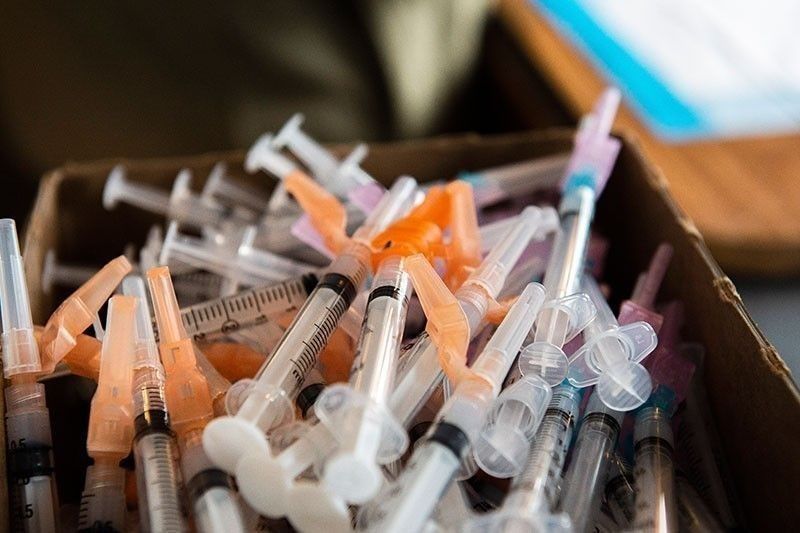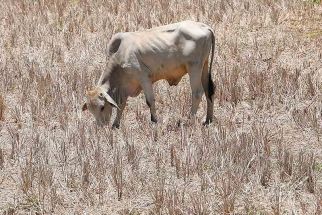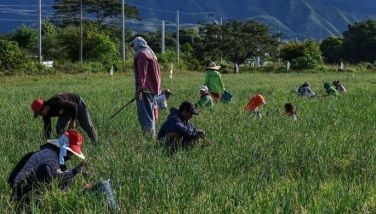60 million COVID-19 vaccines expiring this month

MANILA, Philippines — The number of wasted COVID vaccine doses may reach 60 million by September unless the government ramps up its rollout, Department of Health officer-in-charge Maria Rosario Vergeire confirmed before a Senate panel.
“Our wastage is 17.5 percent, the quantities would be 44 million doses-plus,” Vergeire told the Senate Blue Ribbon committee hearing yesterday on the vaccination program.
“But for the quantity expired for the national government procurement, we have 2.97 percent. For local government procurement, we have 33.4 percent. For private procurement, we have 44.8 percent and for COVAX procurement, we have 13.9 percent. And for the bilateral agreements and procurement or agreements donations, it will be 7.06 percent,” Vergeire said.
She said that by the end of March, the vaccine wastage could reach 50.74 million doses because there are 6.74 million doses expiring within the month.
Basing on the high rate of wastage, Blue Ribbon chairman Sen. Francis Tolentino asked if the number of expired vaccine doses was likely to hit 60 million by September and Vergeire answered in the affirmative.
She also noted that COVAX agreed to replace some of the expired vaccines.
“We have an agreement with COVAX as early as July 2022,” said Vergeire. “They offered to replace the expired vaccine in the country. We were able to have some 398,000 doses replaced by COVAX.”
She admitted, though, that the vaccination rates are still low, especially in the provinces, but noted the DOH’s plan to include the administration of COVID-19 vaccines in its regular community vaccination program to give more people access to them.
At present, an average of 46,000 Filipinos get vaccinated in a week or between 6,000 to 10,000 vaccines administered daily. However, there is a lower rate of booster shots at 27.65 percent or 21.5 million Filipinos, said Vergeire.
Tolentino commented that, perhaps, the absence of regular televised COVID-19 status briefings as seen at the height of the pandemic has contributed to the public’s dwindling interest in vaccines and boosters.
“People might think that there is no urgency to get vaccinated,” he said.
Vergeire clarified that the DOH issues public updates on COVID-19 deaths and severe cases twice a week on its DOH website, the senator noted that some people might not be checking the website in the first place.
Meanwhile, Vergeire also said the DOH is waiting on a go-signal from Malacañang to accept COVID-19 bivalent vaccine doses donated through the COVAX Facility.
She said “COVAX is set to donate to the country these doses for the bivalent vaccine” but that the donation of Pfizer should be covered by immunity from liability.
“We are currently negotiating. We just need some form of guidance from the Office of the President in terms of Pfizer’s requirement for immunity from liability,” she said.
Donate expiring doses
Tolentino asked Vergeire whether or not the vaccines near expiry could be donated to other countries like Turkey and Syria, which were hit by massive earthquakes.
“Are we allowed to donate vaccines in our possession to other countries? Our 15 million doses which we might not use and Africa or Turkiye and Syria, which were hit by massive earthquakes. They reportedly have no vaccines. This is an emergency,” he said.
Vergeire said the DOH has taken the initiative to do so as early as August last year by coordinating with the Department of Foreign Affairs (DFA).
“Unfortunately, the DFA has tried to donate and discussed with different countries. First, we had Myanmar… Unfortunately, after a month of negotiating, they decided not to accept (the donation),” she said, noting that such was the case for four other countries the DFA had reached out to.
“We were left without countries to accept our expiring vaccines,” she said.
Tolentino also expressed concern about the disposal of used vials and expired vaccines, which might have long-term negative effects on the environment. He noted that the Department of Environment and Natural Resources does not have any study about it.
“I’m not convinced that it’s safe when burned. Definitely, when mixed with the river, it still has an effect, as to the matter of safety, no one can say it’s safe because it’s infectious waste,” he said.
BA.2.3.20, XBB most prevalent
More than half of the recently sequenced COVID-19 samples were classified as Omicron subvariant BA.2.3.20, followed by the XBB subvariant in one in five samples, the DOH reported yesterday.
“Out of the recent 761 samples sequenced by the University of the Philippines-Philippine Genome Center last February 27, 468 (61.50 percent) were classified as BA.2.3.20,” the latest COVID-19 Biosurveillance Report said.
The new BA.2.3.20 cases are local cases found in Ilocos region, Cagayan Valley, Central Luzon, Calabarzon, Mimaropa, Bicol region, Western Visayas, Central Visayas, Soccsksargen, Cordillera Administrative Region, Caraga and National Capital Region (NCR) with one case classified as a returning overseas Filipino, while the case type of the remaining seven are currently being verified.
Second among the most prevalent COVID-19 strains detected is the Omicron subvariant XBB (including three cases classified as XBB.1.5), numbering 149 cases and representing 19.58 percent of total samples sequenced.
These were detected in all regions except Mimaropa (Mindoro provinces, Marinduque, Romblon and Palawan or Region 4-B), Eastern Visayas, Northern Mindanao and Davao region.
Meanwhile, nine (1.18 percent) were classified as XBC, six samples of which were yielded from Soccsksargen and one each from Central Visayas, Zamboanga peninsula and Caraga.
The DOH report also noted eight cases of BA.5 that included six cases classified as BQ.1, all of which represent 1.05 percent of the total samples sequenced.
Under BA.5, two were classified as other BA.5 sublineages – one sample from Zamboanga peninsula and the other from Metro Manila. The BQ.1 cases were from samples originating in NCR (3), Central Visayas (1), Soccsksargen (1) and one other still being verified.
The report further said there were four (0.53 percent) cases of BN.1 (classified under BA.2.75). These were detected in the NCR (1) and three were incoming international travelers.
The DOH said 33 cases or 4.34 percent of the total were tagged as “other Omicron sublineages.”
The report showed a total of 671 new Omicron cases logged in the country as the remaining 90 samples sequenced were not assigned lineages.
- Latest
- Trending




























